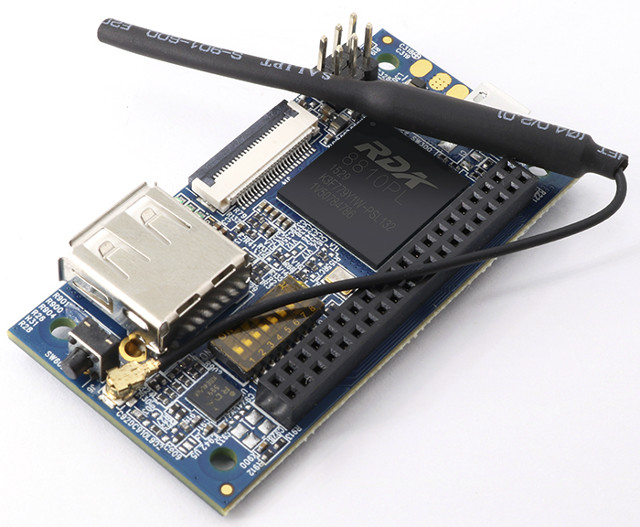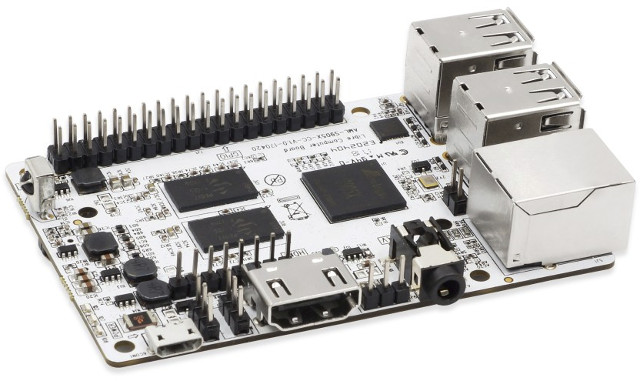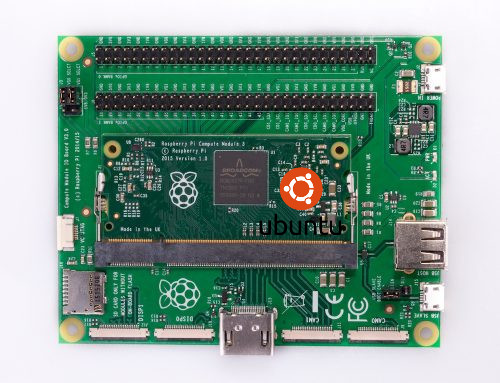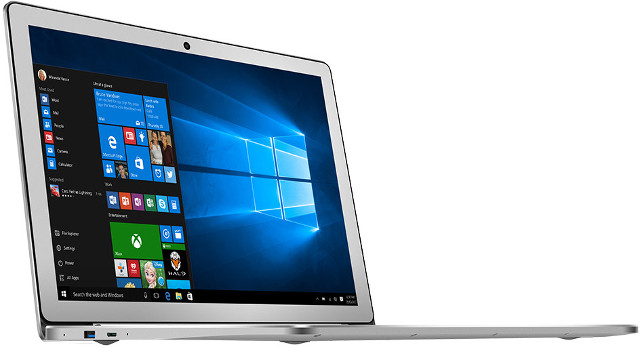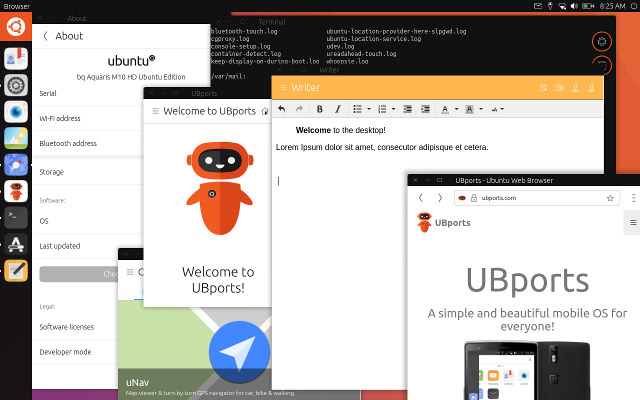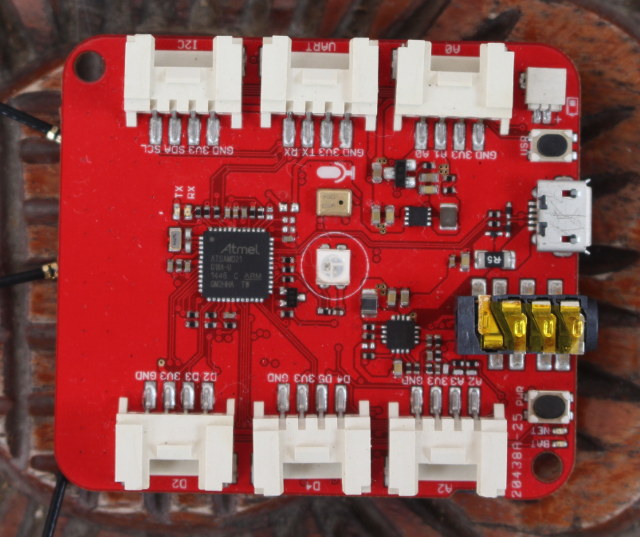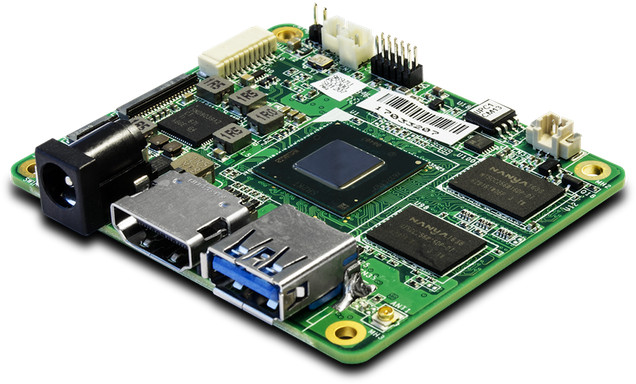Orange Pi i96 board was first unveiled at Linaro Connect US 2016 in September of that year, as one of the first boards compliant with 96Boards IoT Edition specification, and expected to sell for just $9.99. The good news is that the board is now finally available for $8.80 plus shipping on Aliexpress ($12.19 in total in my case) Orange Pi i96 specifications: SoC – RDA Micro 8810PL ARM Cortex A5 processor @ up to 1.0 GHz with 2Gbit (256 MB) on-chip LPDDR2 RAM, 4Gbit (512 MB) on-chip SLC NAND flash , 256KB L2 cache, and Vivante GC860 3D GPU External Storage – micro SD slot Connectivity – WiFi 802.11 b/g/n + Bluetooth 2.1/EDR module (RDA5991) Camera – MIPI CSI-2 connector for camera sensor up to 5MP Video – 1080p30 H.264 encoding USB – 1x USB host port, 1x micro USB OTG port Expansion – 40-pin GPIO header with SPI, […]
Libre Computer’s Le Potato Amlogic S905X Development Board Goes for $25 and Up (Crowdfunding)
Up to now there were two notable Amlogic S905(X) development boards: ODROID-C2 and Khadas Vim. Shenzhen Libre Technology Co., Ltd, a Shenzhen startup, is about to bring one more to the market with Le Potato board, aka AML-S905X-CC, powered by Amlogic S905X processor with 1 or 2 GB RAM, and in a form factor similar to the Raspberry Pi 3 board. Le Potato /AML-S905X-CC board specifications: SoC – Amlogic S905X quad core ARM Cortex-A53 processor @ 1.5 GHz with penta core ARM Mali-450MP GPU, and Amlogic Video Engine 10 System Memory – 1GB or 2GB DDR3 RAM Storage – 1x micro SD Card slot with UHS SDR104 support, eMMC module connector with HS400 support Video Output – HDMI 2.0 Port, 3.5mm TRRS “AV” jack with CVBS (480i / 576i) Audio Output – HDMI, AV jack (stereo audio), SPDIF output header, and I2S header Connectivity – 10/100M Ethernet USB – 4x […]
Canonical Releases Ubuntu Core 16 for Raspberry Pi 3 Compute Module
Now that Canonical has refocused its development efforts on Cloud and IoT, Ubuntu Core has become even more important for the company, which has just released Ubuntu Core 16 for the Raspberry Pi 3 Compute Module, which is better suited for industrial projects than Raspberry Pi boards, for example thanks to the more resilient built-in storage of CM3 module. Ubuntu Core was already supported on Raspberry Pi 2 & 3, Intel Joule, DragonBoard 410c, Intel NUC, and Samsung Artik boards, as well as KVM to run Ubuntu Core in a virtual environment. One of the advantages of running Ubuntu Core is the availability of snaps and branded app stores, making it easy to provide updates, and promote app for the platform. Screenly is one commercial project that will take advantage of Ubuntu Core on CM3 module for their digital signage applications. You’ll find instructions to get started with Ubuntu Core […]
CHUWI LapBook 12.3 Apollo Lake Laptop with 2736 x 1824 Display Sells for $300 (Promo)
CHUWI LapBook 12.3 is a laptop powered by an Intel Celeron N3450 “Apollo Lake” processor, with 6GB RAM, 64GB storage, and a high-resolution display that ships with Windows 10 Home, and is supposed to support Ubuntu too. While the laptop was announced last April for $349, it has now started to sell for $299.99 on GearBest with coupon CHUWI123 valid for the first 100 orders only, after which you should be able to get it for $309.99 during flash sales. CHUWI LapBook 12.3 specifications: SoC – Intel Celeron N3450 quad core “Apollo Lake” processor @ 1.1 GHz / 2.2 GHz (Burst frequency) and 12 EU Intel HD graphics 500 @ 200 MHz / 700 MHz (Burst freq.); 6W TDP System Memory – 6GB DDR3 Storage – 64 GB eMMC flash + micro SD slot up to 128 GB + M.2 SSD up to 256 GB Display – 12.3″ IPS display […]
UBPorts Project Announces its First Stable Ubuntu Touch Release for Supported Smartphones
Canonical may have stopped working on Unity, Mobile & Convergence for Ubuntu last April, but since then, at least two teams have worked on Unity and mobile convergence alive with respectively yunit and UBPorts projects. There has not been much activity on the former, but UBPorts has recently announced the first OTA-1 stable release for supported devices, minus Nexus 4 and 5 for now. This release brings bug fixes, experimental AGPS support, he UBports Welcome app, the OpenStore, and the Terminal and File Browser are preinstalled. It should work on OnePlus One, FairPhone 2, Optimus L90, BQ Aquaris M10 HD / FHD, and possibly some other models. They also mentioned work on Halium – a project aiming to standardize the Android hardware compatibility layer between many Linux distributions – has been progressing nicely, and it can now boot both Ubuntu Touch and Plasma Mobile. Convergence still needs some work, but […]
Review of Wio Tracker with GPS, Bluetooth 3.0 and GSM Connectivity
Wio GPS – also called Wio Tracker – is an Arduino compatible board based on Microchip Atmel SAMD21 MCU with GPS, Bluetooth, GSM/GPRS connectivity, as well as several Grove connectors to connect sensors and modules for your IoT project. SeeedStudio sent me a sample for evaluation, so I’ve tested it, and reported my experience below by testing some of the Arduino sketches. Wio Tracker Unboxing All I got in the package was Wio GPS tracker v1.1 board. The top includes the Atmel MCU, an RGB LED, a microphone and 3.5mm AUX jack to make phone calls, a user and power button, a micro USB port for power and programming, a small 2-pin connector for a battery, and 6 Grove connectors for digital, serial, I2C and analog modules. The other side of the board comes with Quectel MC20 module that handles Bluetooth, GPS and GSM, a dual use micro SD card […]
Amazon AWS Greengrass Brings Local Compute, Messaging, Data Caching & Sync to ARM & x86 Devices
Amazon Web Services (AWS) provides cloud computing services to manage & store data from IoT Nodes over the Internet, but in some cases latency may be an issue, and Internet connectivity may not be reliable in all locations. AWS Greengrass provides a solution to those issues by running some of the IoT tasks within the local network in ARM or x86 edge gateways running Linux. You can still manage your devices from AWS cloud, but a Linux gateway running Greengrass Core runtime will be able to run AWS Lambda functions to perform tasks locally, keep device data in sync, and communicate with devices running AWS IoT Device SDK. Greengrass benefits include: Response to Local Events in Near Real-time Offline operation – Connected devices can operate with intermittent connectivity to the cloud, and synchronizes with AWS IoT once it is restored Secure Communication – AWS Greengrass authenticates and encrypts device data […]
UP Core Intel Board Has Launched for 69 Euros and Up on Kickstarter
During spring, we discovered UP Core, a tiny board powered by Intel x5-Z8350 Cherry Trail processor that promised to sell for as low as 69 Euros. But at the time, it was not available yet for purchase, and the good news is that UP has just launched a one month crowdfunding campaign on Kickstarter to raise funds for mass production, and promote the board. UP Core specifications have not changed since the first announcement: SoC – Intel Atom x5-Z8350 “Cherry Trail” quad core processor @ 1.44 GHz / 1.92 GHz (Burst frequency) with Intel HD 400 graphics @ 200 / 500 MHz System Memory – 1, 2 or 4 GB DDR3L-1600 Storage – 16, 32, or 64 GB eMMC flash, SPI flash ROM Video Output / Display – HDMI 1.4 port, full eDP (embedded DisplayPort) connector Audio I/O – Via HDMI, and I2S Connectivity – 802.11 b/g/n WiFi @ 2.4 […]


